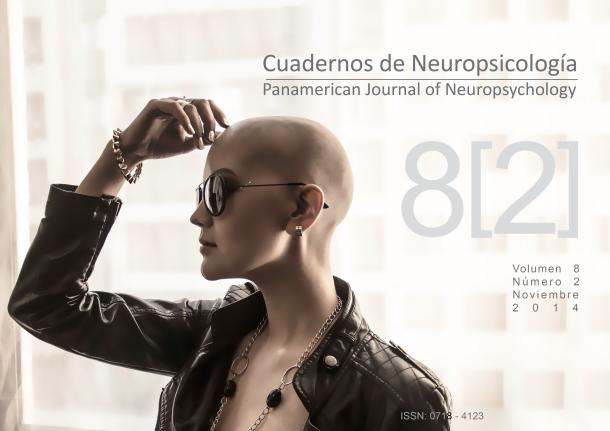Relación entre la Reserva Cognitiva y el Enriquecimiento Ambiental: Una revisión del Aporte de las Neurociencias a la comprensión del Envejecimiento Saludable
Abstract
Resumen
El presente trabajo se trata de una revisión que finaliza con una propuesta teórica de la relación entre la teorÃa de la Reserva Cognitiva (RCog) y el modelo animal de Enriquecimiento Ambiental (EE), proponiendo una analogÃa teórica con fundamento empÃrico entre los indicadores más fiables de la RCog y los cuatro componentes del modelo de EE. Se realiza una revisión de los antecedentes de ambos conceptos, se presenta evidencia de estudios sobre RCog y sobre el efecto del EE sobre el cerebro y la cognición en la vejez y se finaliza con la relación entre los constructos. Se concluye que existe evidencia empÃrica de ésta relación, que puede extraerse a través de la analogÃa de los componentes del EE con estudios de estimulación sensorial, cognitiva, fÃsica y social que incluyen a los indicadores más fiables de la RCog. Se sugiere profundizar en los efectos de la exposición temprana e incluso tardÃa a ambientes enriquecidos sobre la RCog en adultos, resaltando la relevancia social de estos estudios en beneficio del diseño de programas de prevención y promoción de la salud en el adulto mayor.
Palabras clave: Envejecimiento; Declive cognitivo, Reserva cognitiva; Reserva cerebral; Enriquecimiento Ambiental; Neurociencia cognitiva, Revisión teórica.
Abstract
This paper is a review that ends with a theoretical proposal of the relationship between the theory of Cognitive Reserve (CogR) and the Environmental Enrichment (EE) animal model, proposing a theoretical analogy with empirical basis among the most reliable indicators of the CogR and the four components of the EE model. A review of the history of both concepts was performed, it presents evidence of studies on CogR and the effect of EE on the brain and cognition in old age and ends with the relationship between the constructs. We conclude that there is empirical evidence of this relationship, which can be extracted through the analogy of the components of EE with studies of sensory, cognitive, physical and social stimulation that include the most reliable indicators of the CogR. It is suggested further research on the effects of early exposure and even late to enriched environments on the CogR in adults, highlighting the social relevance of these studies for the benefit of prevention programs and health promotion in the elderly.
Key words: Cognitive Decline, Cognitive Reserve; Cerebral Reserve; Environmental Enrichment; Cognitive Neurosciences, Theoretical Review.
Downloads
How to Cite
Issue
Section
License
Articles published in this journal are protected under the Creative Commons Attribution-NonCommercial-ShareAlike 4.0 International (CC BY-NC-SA 4.0) license. This means that authors retain full rights over their research and publications at all times. As a journal, we fully respect and promote the principles of open access established by this license, allowing the work to be shared, adapted, and distributed for non-commercial purposes, provided that appropriate credit is given to the authors and any derivative works are licensed under the same terms.
Authors are responsible for obtaining the required permission when they wish to reproduce part of the material (figures, etc.) from other publications.
Likewise, CNPs allows authors to host in their personal sites or other repositories that they deem convenient the Final and Definitive Version of the published article with the format assigned by the journal. In no case do we allow access to preprints of the article under evaluation or already published.
When submitting an article to CNPs you are aware that all the contents of CNPs are under a Creative Commons License. In which it is allowed to copy and share the contents freely, always making reference to the origin of the publication and its author.


